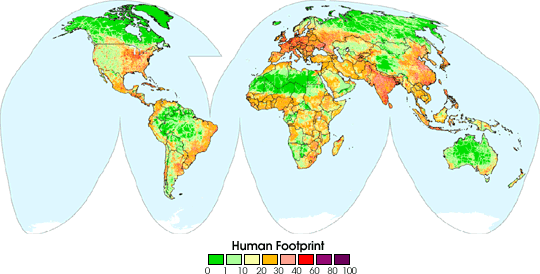
Dried riverbed of the Rio Negro in northern Brazil. Photo by <a href="http://www.flickr.com/photos/visionshare/5171858556/sizes/o/in/set-72157625373884742/">Visionshare</a>/Flickr.
A new study in Science predicts that last year’s drought in the Amazon rainforest, its worst on record, will lead to carbon emissions of about 8 billion metric tons by the end of this year, or 2.6 billion metric tons more than what the United States emitted in 2009. The drought, the study says, created a water deficit that increased tree mortality in three epicenters, hindering the forest’s ability to absorb carbon dioxide. (To visualize the scale of the drought, think of rainfall shortages over an area more than seven times that of California.) What’s most alarming about the Amazon’s droughts, though, is that they’re causing carbon-emission levels high enough to probably cancel out the amount of carbon the forest absorbed over the past decade.
As Reuters reports, the study’s lead author Simon Lewis, an ecologist at the University of Leeds, warns:
If events like this happen more often, the Amazon rain forest would reach a point where it shifts from being a valuable carbon sink slowing climate change to a major source of greenhouse gases that could speed it up.
Deforestation has already diminished forests’ capacity to absorb carbon worldwide; it’s responsible for as much as 30 percent of global greenhouse gas emissions, according to the Food and Agriculture Organization. The study’s findings mean that now droughts are pushing down forest coverage and quality even further. Translation: Not only are forests getting worse at slowing climate change, they may actually be accelerating it.
Lewis notes that more research is needed to determine whether the Amazon drought was the result of more greenhouse gases in the atmosphere or if it was simply a climate anomaly. But even if we’re not causing the decline of the Amazon through emitting greenhouse gases, humans have already made a broad and profound physical impact on land quality. The NASA graphic from 2003 (below) depicts the intensity of human environmental footprint around the world, based on population density, land transformation, human access, and power infrastructure, measured on a scale from 1 (least influence/dark green) to 100 (most influence/purple):
 Center for International Earth Science Information Network/NASA
Center for International Earth Science Information Network/NASA















